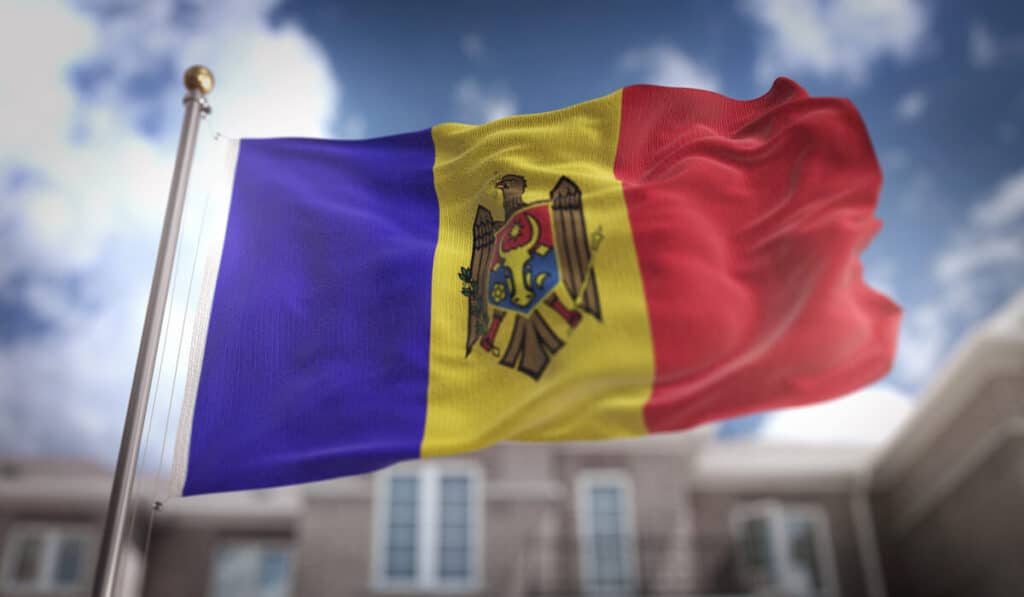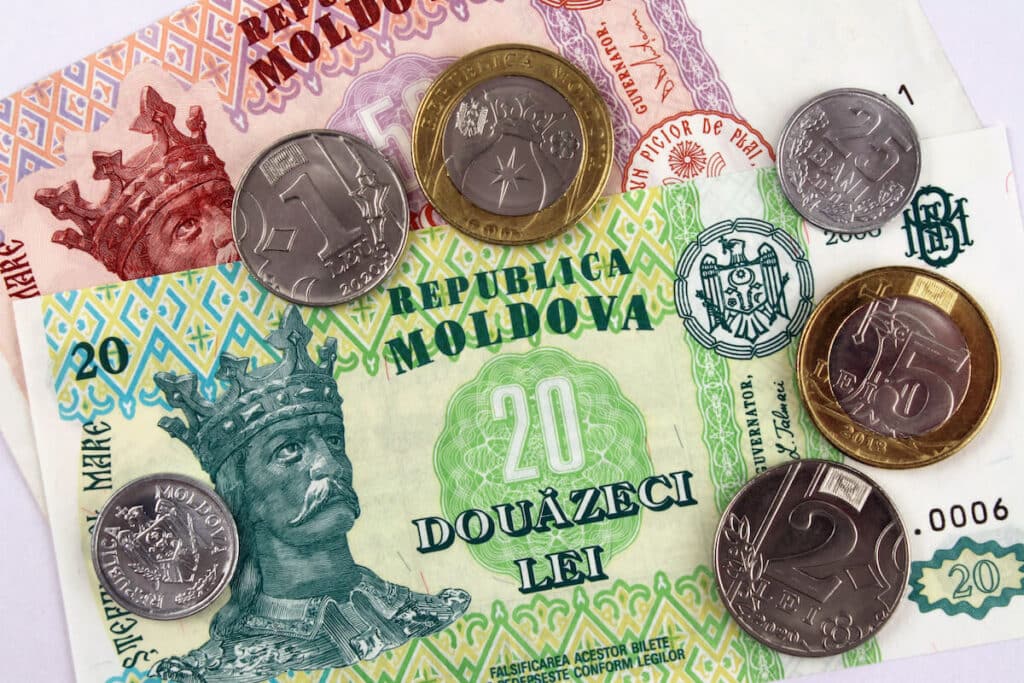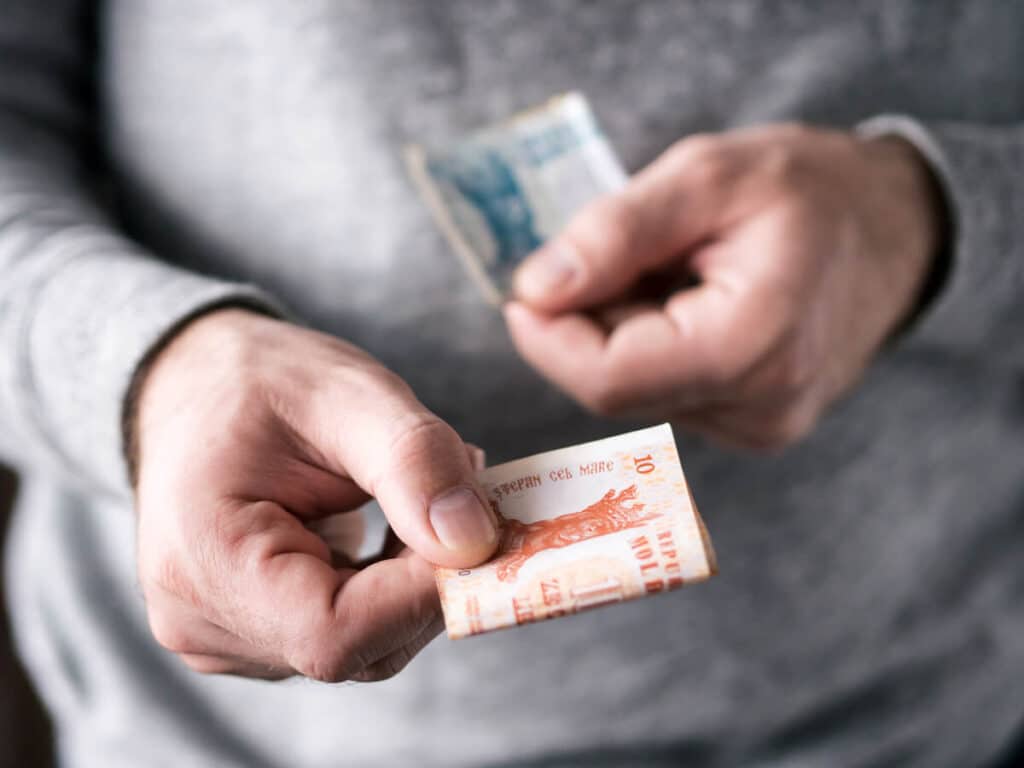The Republic of Moldova is a small country in Eastern Europe that shares a border with Romania and Ukraine. Moldova’s currency, the leu, is one of several similar currencies in the region, but the Moldovan leu has a few unique features that set it apart.
If you’re planning to visit Moldova or you need to send money to friends or family there, you’ll want to be familiar with the leu’s denominations and exchange rate.
Let’s take a look at the history of Moldova’s currency, which denominations it comes in, and how to get the best exchange rate when sending money overseas.
The history of Moldova currency
Moldova’s history starts in the prehistoric era, with some reports placing humans in the region more than 800,000 years ago. The Romans, Goths, Huns, Mongols, Tatars, and even the Vikings all passed through the area, until finally the Principality of Moldavia united the inhabitants of the region into a single state in the 1330s.
The Republic of Moldova as we know it has changed shape many times, while retaining much of the same land area. It was part of Romania during the interwar years (between World Wars I and II) and then part of the Soviet Union until 1991.
Moldova’s currency has a much shorter history, and only arrived on the scene in 1993, two years after Moldova’s independence. During those two years, Moldova used the “cupon” as its currency, which had the same value as the Soviet ruble.
But this was only ever a temporary currency, and once the National Bank of Moldova introduced the leu, it took its place as the official currency of Moldova.
Moldova currency denominations

Moldova’s currency uses the currency code MDL and the letter “L” as its symbol. Each leu (plural: lei) consists of 100 bani. Moldova has nine banknotes, all of which feature Ștefan cel Mare (Stephen the Great), who ruled Moldavia between 1457 and 1504.
Banknotes come in the following nine denominations:
- 1 leu
- 5 lei
- 10 lei
- 20 lei
- 50 lei
- 100 lei
- 200 lei
- 500 lei
- 1,000 lei
The central bank of Moldova introduced intaglio printing (a security feature) in 2015. It also uses watermarks, security threads, and other anti-counterfeiting techniques when designing new editions of its currency.
Moldovan coins come in the following nine denominations:
- 1 ban
- 5 bani
- 10 bani
- 25 bani
- 50 bani
- 1 leu
- 2 lei
- 5 lei
- 10 lei
The State Mint of Romania produces most of the coins currently used in Moldova.
Although 1-ban coins are still valid, they don’t have much value in practice, and cash rounding is common practice at many Moldovan merchants.
6 facts about Moldova currency

Although the history of Moldova’s currency may be short, its design and features reflect the country’s roots. Here are six facts about the currency of Moldova that will give you a deeper appreciation of the country’s geography and history.
1. The word “leu” means lion.
The word “leu” means “lion”, and the name itself comes from a Dutch coin called the “leeuwendaalder” (or “lion dollar”) that had a lion on it.
2. Moldova’s currency shares a history with two other currencies.
Both the Romanian leu and the Bulgarian lev share a link to Moldova’s currency, and they get their name from the same source.
In fact, the Romanian leu uses the same subunit, the ban, while the lev consists of 100 stotinki. Moldova briefly used the Romanian leu when it was part of Romania.
In 2024, however, both Romania and Bulgaria will be switching to the euro (EUR), leaving the Moldovan leu as the last remaining currency on this family tree.
3. Banknotes feature a Romanian song called Miorița.
In addition to the image of Ștefan cel Mare, Moldovan leu banknotes feature an iconic line of text: “Near a low foothill/At Heaven’s doorsill.”
These are the opening lines to “Miorița,” a Romanian folk song that’s one of the most popular ballads in the region. It dates back to the 1700s, and the name means “little ewe lamb,” or “the lambkin.”
4. The central bank redesigned the 50-bani coins in the 1990s.
In 1997, the central bank decided to upgrade the 50-bani coin, swapping out the old aluminum version with a brass-plated steel version. The new coins have a milled or reeded edge, which prevents people from filing them down or counterfeiting them.
The bank demonetized the old coins in 1999, so they’re no longer legal tender.
5. All Moldovan currency uses the Latin script.
While Moldova was part of the Soviet Union, the Moldovan language used the Cyrillic script. But since Moldova’s currency arrived after it became an independent country, there’s no trace of Cyrillic. All of the text on Moldovan currency uses Latin letters.
6. Transnistria has its own currency, the ruble.
Transnistria is a “breakaway state” within Moldova’s borders that began issuing its own currency in 1994. The Transnistrian ruble is based on the Russian ruble, but its value is pegged to the U.S. dollar (USD) at a rate of 16.10 rubles to 1 USD.
It doesn’t have its own currency code, but some Transnistrian banks identify it using the currency code PRB. You can’t use Moldovan currency in Transnistria.
Understanding Moldovan currency exchange rates
Moldova’s economy is based around agriculture, food processing, and exports, with a GDP of about $14 billion. The National Bank of Moldova works hard to keep inflation low by overseeing the country’s monetary policy. Still, the value of Moldovan currency can fluctuate against other currencies from year to year.
You can check the current value of 1 MDL using an online currency converter.
Using currency in Moldova
Moldova has a cash-based economy, so if you’re visiting Moldova, you’ll need to have some leu on hand. Paying with a credit card may be an option in Chisinau, the capital, but less so if you’ll be traveling to rural areas.
Since it isn’t easy to obtain leu outside of Moldova, you’ll likely need to exchange your money once you arrive. Your best bet may be to convert your home currency into EUR or USD, and exchange that for Moldovan currency to get the best rates.
You may have a hard time exchanging other currencies in Moldova. Check the latest currency rates to determine which option makes the most sense for you.
And remember, Transnistria is a different story. If you’ll be traveling there, you won’t be able to spend Moldovan currency or withdraw money from an ATM. It isn’t possible to send money to Transnistria using the international banking system either.
Send money to Moldova with a mobile app

Depending on where you’re located, an international money transfer may be the best way to send money to Moldova. According to the World Bank, Moldovans receive around $2 billion USD in personal remittances every year.
Mobile money transfers can spare you from the high fees associated with international credit cards and ATM withdrawals. Plus, you can compare providers to ensure you get an affordable exchange rate.
Remitly makes it easy to send money to your friends and family or even to your own international bank account using our mobile app. Simply fund your transfer with your debit card, credit card, or bank account, and track it via SMS or email.
Over 5 million people have used Remitly to send money to their loved ones. Download the app today to get started!
